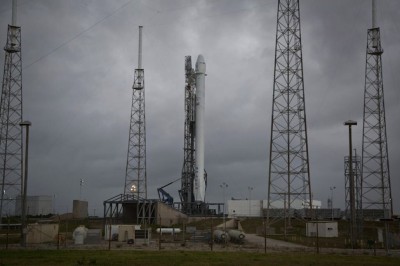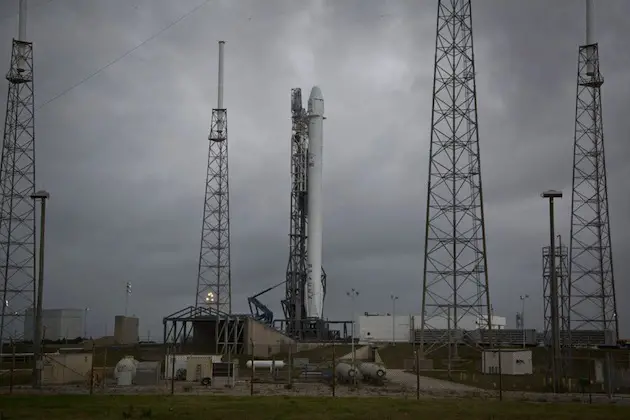 On April 18, 2014, PayPal founder Elon Musk’s private spacecraft company, SpaceX, claimed its first successful launch of its reusable rocket, the Falcon 9, achieved through the launch of SpaceX-3.
On April 18, 2014, PayPal founder Elon Musk’s private spacecraft company, SpaceX, claimed its first successful launch of its reusable rocket, the Falcon 9, achieved through the launch of SpaceX-3.
Perched atop the Falcon 9 was the Dragon cargo capsule, its mission being a special resupply for the International Space Station. Items ferried by the Dragon capsule include a shiny set of robotic legs for NASA’s Robonaut 2, a microbe experiment, and a miniature farm experiment called “Veggie,” which is designed to grow lettuce in space.
This launch is a momentous moment for both SpaceX and privatized spaceflight alike. After jettisoning Dragon and its payload, the Falcon 9 rocket began its descent to Earth. Typically, this leads to the destruction of the rocket, rendering it no longer reusable. SpaceX and Elon Musk have confirmed, however, that the Falcon 9 rocket successfully executed a highly experimental maneuver that aimed to guide the first stage of the Falcon 9 to the Atlantic Ocean. The flight computers aboard the Falcon 9 conveyed an overwhelmingly positive message about the post-flight landing experiment. As Musk tweeted:
Flight computers continued transmitting for 8 seconds after reaching the water. Stopped when booster went horizontal.
— Elon Musk (@elonmusk) April 19, 2014
This is exactly what Musk and his team were hoping for. The successful splashdown of this experimental landing maneuver means that SpaceX can recover its spent launched rocket for the first time ever. It’s a huge win for the company that will lead to millions of dollars in savings for SpaceX.
Now SpaceX’s engineers will be able to pour over all of the data collected from the experimental splashdown and its time spent reentering the atmosphere where it achieved at a near-zero roll rate. The lack of a roll rate means that the Falcon 9 rocket wasn’t damaged on the way down, a first for the rocket and its previous variations. With this new information, SpaceX hopes to build better landing procedure.
Ultimately, the company wants landings to turn out like the landings of its Grasshopper experiments, which have finally morphed into the successful launch and landing (the day before the launch of SpaceX-3, no less!) of the Falcon 9 Reusable, another SpaceX first, seen in the video above.
Related Techaeris Articles: NASA’s Morpheus Lander Flies Free Once More
Sources: Space.com, Engadget, BBC News
Image Source: Engadget
Last Updated on November 27, 2018.











Comments are closed.